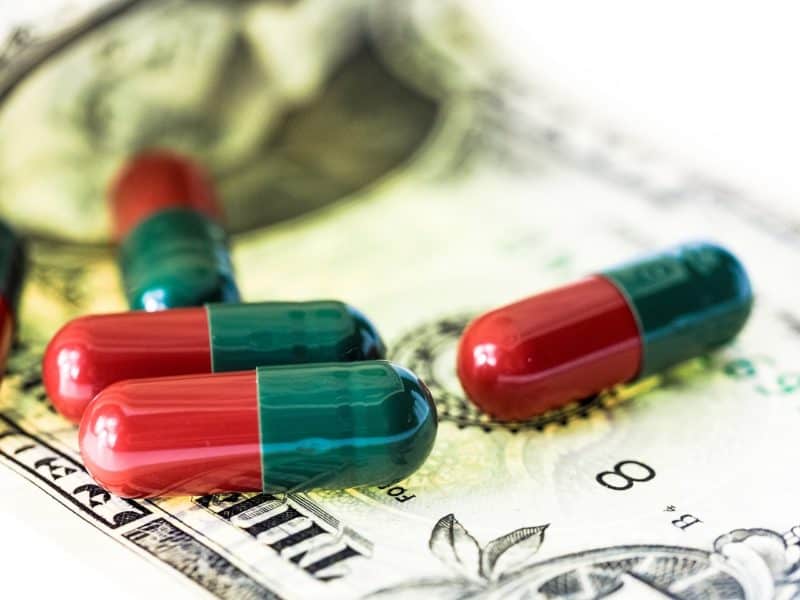Prescribing generic medications for heart and blood vessel diseases more frequently instead of brand-name medications in Medicare’s prescription drug program, called Part D, could save more than $600 million each year in the U.S., according to new research published today in Circulation: Cardiovascular Quality and Outcomes, an American Heart Association journal.
Heart disease is the number one cause of death in the United States and around the world. Brand-name medications can be expensive, and in many cases, equally effective, less costly generic alternatives are available.
This study compared prescription-filling patterns between brand-name vs. generic medications that prevent or treat irregular heart rhythms, blood clotting, high blood pressure and high cholesterol. Using nationwide records from Medicare Part D prescription coverage, which applies to all adults older than 65 years in the U.S., researchers reviewed prescriptions filled in 2017 for cardiovascular medications that are available in both generic and brand-name formulas. They analyzed how often generic medications were substituted for brand-name medications and estimated the savings associated with increased use of generic medications.
They found:
- Overall, Medicare Part D paid nearly $23 billion for cardiovascular medication prescriptions in 2017.
- Nearly half of this amount, $11 billion, was spent on medications available both in generic and brand-name formulas.
- Although only 2.4% (or $20 million) of prescriptions filled were for the brand-name medications, they accounted for more than 21% of total Medicare Part D prescription spending.
- A few clinicians (8.2% of 418,836 prescribing physicians in the study) who prescribed generics the least may account for 50% of the additional potential cost savings, as estimated by the researchers.
“Increasing the use of generic medications would decrease patient out-of-pocket costs and make medications more affordable, which may, in turn, improve adherence rates and reduce the financial burden of medication therapy,” said senior study author Alexander Sandhu, M.D., M.S., instructor of medicine at Stanford University School of Medicine in Stanford, California.
Even after controlling for cash rebates available for some of the brand-name medications, the researchers estimate increased use of generic substitutions in Medicare Part D could save $641 million per year, which includes approximately $135 million in out-of-pocket cost savings to patients.
Some state laws require pharmacists to seek patient consent to substitute with a generic; other state laws mandate pharmacists substitute generics unless the physician indicates the prescription must be “dispensed as written.”
“Generic substitutions have similar efficacy as brand-name options, however, there may be misinformation and hesitation about the safety and efficacy of generics,” Sandhu said. “FDA regulatory oversight into the safety and efficacy of generic substitutions is critical for improving the use of generic medications.
“Ensuring that patients almost always receive the generic option will further reduce patient out-of-pocket costs. Health care systems should continue to find ways to encourage clinicians and patients toward generic medication options when available.”
Several limitations may have affected the study’s results. The study reviewed only Medicare Part D prescription coverage, which only includes adults older than 65 years. In addition, the study did not account for differences in doses and included generic substitutions even if they were more expensive than brand-name medications with cash rebates.
“Research shows that when passed onto patients, high prices reduce medication adherence and can lead to negative health outcomes,” said former American Heart Association President Elliott Antman, M.D., FAHA, chair of the writing group for the Association’s 2017 presidential advisory on medication access and affordability and senior physician specializing in cardiovascular medicine at Brigham and Women’s Hospital and professor of medicine at Harvard Medical School in Boston.
“Patients’ health suffers when they can’t afford the medicines they need.”
The Presidential Advisory guides the Association’s advocacy efforts to support patients in addressing rising medication costs and the associated adverse health impacts. The advisory states that the costs of medications should be readily available for practitioners and patients so that they can make informed treatment decisions. Tools that detail information on pricing and value would help health care professionals and patients make decisions in selecting care regimens that best align with patient and family preferences and goals, according to the advisory.
Co-authors of the research are Iris Ma, M.D.; Rebecca L. Tisdale, M.D., M.P.A.; Daniel Vail, M.D.; and Paul A. Heidenreich, M.D., M.S. Authors’ disclosures are listed in the manuscript.
The National Heart, Lung and Blood Institute of the National Institutes of Health fund Dr. Sandhu, and the VA Office of Academic Affairs Advanced Fellowship in Health Services Research fund Dr. Tisdale.
Statements and conclusions of studies published in the American Heart Association’s scientific journals are solely those of the study authors and do not necessarily reflect the Association’s policy or position. The Association makes no representation or guarantee as to their accuracy or reliability. The Association receives funding primarily from individuals; foundations and corporations (including pharmaceutical, device manufacturers and other companies) also make donations and fund specific Association programs and events. The Association has strict policies to prevent these relationships from influencing the science content. Revenues from pharmaceutical and biotech companies, device manufacturers and health insurance providers and the Association’s overall financial information are available here.


